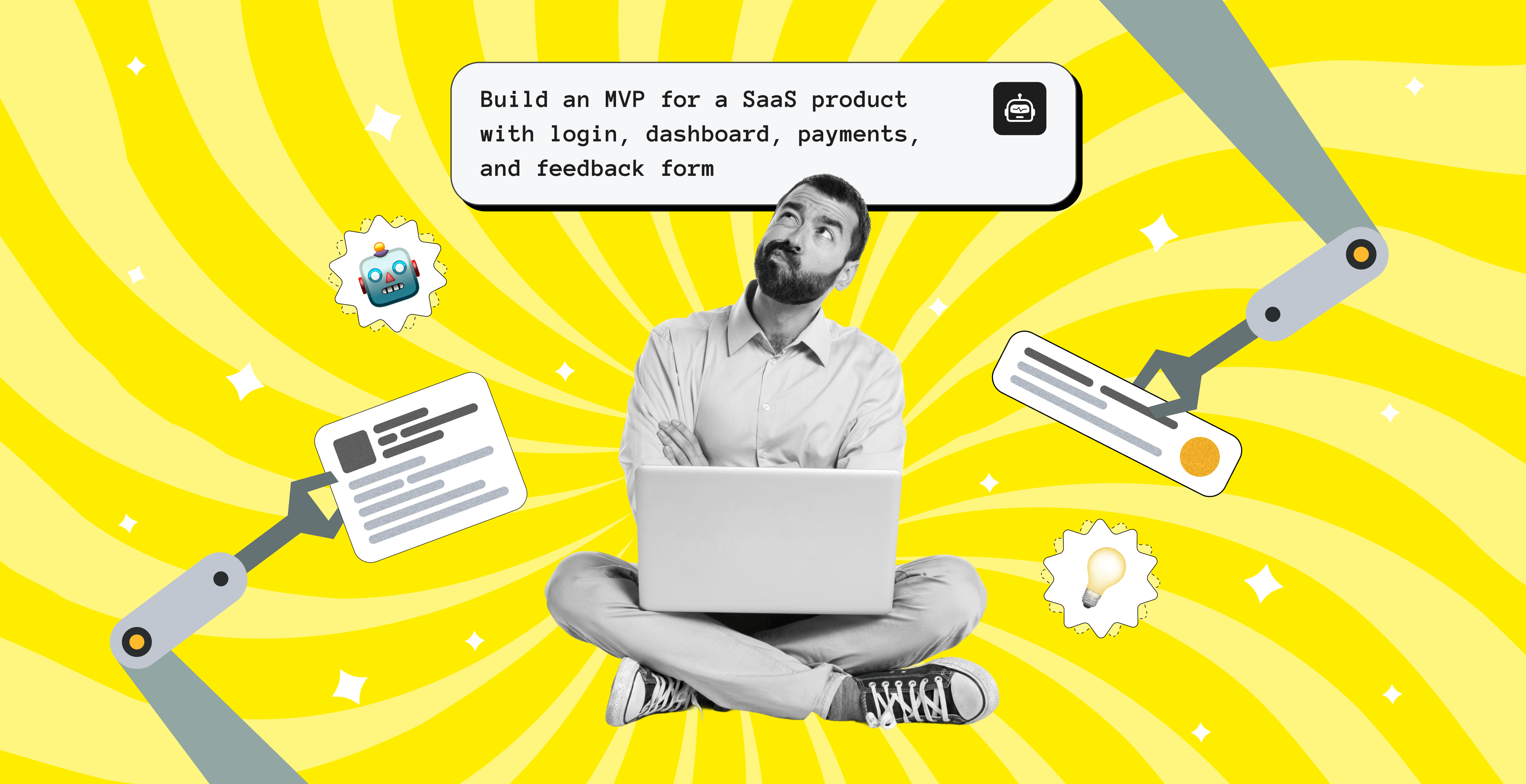Custom Healthcare Software: Types, Benefits and Why to Implement in 2024

In recent years, the healthcare sector has been undergoing a major transformation of the workflow. Hospitals and health facilities started implementing technologies into their daily work by simplifying the complex processes. Nowadays, we see many examples of how digital innovations are being successfully integrated into the healthcare industry, ranging from electronic medical records and hospital management systems to advanced technologies for complex surgeries.
And with the advancement of custom software, it became possible to perform many tasks like screening, remote patient monitoring, and tracking the course of the disease, often facilitated through healthcare data mining. Along with improving self-care experience, such solutions reduce the burden on the healthcare system and minimize the physical presence of patients in medical institutions, which becomes especially important during the pandemic.
Custom medical software is customized business solutions used within the healthcare system. Developers create them from scratch to meet the individual client's requirements. Such made-to-measure solutions are made for the specific needs of each medical organization and often require a particular approach. Therefore, many healthcare institutions choose to develop custom software instead of using the conventional solutions as there are many custom vs off-the-shelf software peculiarities.
There are many types of medical software. Each solves different tasks and can bring various benefits to patients, physicians, medical organizations, and the entire healthcare ecosystem. In this article, we will explain how.
Business-Centric Solutions
This medical software development type aims to provide medical facilities and physicians with a more comfortable and fluent workflow. There are several types of business-centric software.
EHR Software
EHR (Electronic Health Records) software is a digital database used to collect information about patients, for example, their medical history. It is one of the most popular types of medical software (if not the single most popular) because it minimizes the paperwork physicians need to carry out and guarantees storage security.

This type of software usually covers various features, starting with the storage and management of medical information and decision-making support for medical workers to customizable templates designed for their specific needs. So, it speeds up the EHR workflow and empowers the practice to offer better medical services to its patients. In addition to these capabilities, integrating AI therapy notes as an additional tool can further enhance the patient experience when used alongside EHR software. AI therapy notes provide automated documentation and insights, allowing healthcare providers to focus more on patient care while ensuring accurate and efficient record-keeping.
Hospital Management Software
Hospital management software is a fully integrated system that assists medical workers and hospital administration in their daily tasks. It helps outline and implement policies, guarantee communication and coordination between employees, automate routine tasks, design patient-oriented workflows, advertise services, manage human and financial resources and provide an uninterrupted supply chain.
Such type of software often integrates with EHR solutions to help simultaneously keep track of patient records. Moreover, modern hospital management software offers an in-depth perspective on revenue cycle management by incorporating RCM KPIs (Key Performance Indicators). These KPIs play a vital role in assessing how efficiently a health care facility is managing its resources and revenues. They monitor aspects like billing cycle times, claim denial rates, and payment collection speeds, providing valuable data to streamline operations and improve financial performance. The components of a hospital information system can be chosen and combined in the general system that meets the needs and norms of the healthcare industry as well as quality standards. A good example of this would be integrating clinical evaluation report software into your hospital information system to better facilitate your CER for medical devices, where laws and regulations allow it.
Medical Imaging Software
Medical imaging supplies diagnostic information on such medical conditions as cancer, neurological, gynecological disorders, and cardiovascular diseases. Specialized software in this area enables medical workers to operate with MRI/CT/PET scans more effectively and create 3D models of different body systems and organs in a real-time visual representation.

According to the Statista forecast, the market size of medical imaging analytics software will exceed $4.2 billion by 2025. In combination with such technologies as machine learning, deep learning, and AI that type of software will significantly enhance doctors’ expertise. The interpretation of information provided by medical imaging software can, for example, reduce the need for surgery or, on the contrary, indicate immediate hospitalization.
Medical Diagnosis Software
Medical diagnosis software allows doctors to discover the wary symptoms and come up with the correct diagnosis as well as to share in real-time patient records within the system. This software type often uses AI writing tools to analyze all collected data and generate the most appropriate diagnosis and solutions.
During the pandemic, when personal contacts needed to be reduced, it became very relevant for both patients and medical workers. It allows patients to check their symptoms without going to the hospital and doctors to put diagnoses and track the voice of the diseases remotely.
Medical Billing Software
This type of software is designed to automate billing processes and keep track of all financial operations (invoicing, insurance claims, patient’s eligibility verification, etc.) from any device within several clicks. Additionally, it can provide healthcare financial assistance by simplifying the management of patient accounts and streamlining payment processes. Healthcare billing software reduces manual mistakes that can happen while transferring personal data between systems. With such a single-base program, transactions became more transparent and secure. Similarly, EMS ePCR software plays a critical role in streamlining emergency medical services by digitizing patient care reports, ensuring accurate documentation, and improving data accessibility for first responders and healthcare providers.
Benefits of Custom Software for Health Facilities and Medical Professionals
All types of software can be integrated with each other. This integration is particularly beneficial when health facilities need to collaborate with external services such as a record retrieval company to efficiently obtain pertinent medical documents. It allows businesses and health workers to get the biggest value from using the custom software and to enhance their expertise in the healthcare industry. To sum up, the benefits of custom medical software include the following:
- Minimization of routine paperwork;
- Fluent and efficient management process within the facility;
- Efficient treatment due to early detection of diseases;
- Easier communication with other medical workers within the healthcare system;
- Real-time access to data;
- Automation of various day-to-day tasks;
- Reduction of manual mistakes and operational costs.
Patient-Centric Solutions
Patient-centric solutions are aimed to make the interaction between patients and medical institutions easier and more comfortable. With such software, patients no longer need to store health cards, stand in a long line, schedule an appointment by phone, etc. Let’s explore patient-centric solutions in more detail.
Telemedicine Software
Telemedicine software makes medical treatment online possible, accessible, and effective. This type of software has become very popular recently due to the COVID-19 outbreak. Statista forecasts that the telemedicine market size will exceed $41 billion by 2026. This forecast shows the overall convenience of telemedicine for doctors and patients alike.
More and more patients want to receive consultations without going to the hospital. With telemedicine software, they can connect with their doctors online using various communication methods (calls, video conferencing, chats, etc.) and different devices (mobiles, computers, and tablets).

Doctors and patients can use a telemedicine platform to:
- Assess whether or not the patient needs treatment in person;
- Provide certain kinds of medical care, such as mental health treatment and assessments for minor infections;
- Write or renew prescriptions;
- Offer certain types of therapy, such as speech and physical therapy.
Personal Health Record Software
Such type of software is one of the most effective ways for patients to stay engaged and manage their ongoing treatment. Personal health records are digital files containing a history of medical conditions and procedures, allergies, medications, and immunizations. All personal medical information (or data of the whole family, for example) is stored in one place and can be instantly accessed from any device.
Personal health record software can be tied to physician’s or hospital's EHR systems, and in this case, it works similarly to a patient portal. It enables patients to:
- Track and assess their health: record and track progress toward their health goals;
- Make the most of doctor visits: prepare any questions or get any information like blood sugar diary ready before a visit to a doctor;
- Manage their health between visits: upload and analyze data from home-monitoring devices such as a blood pressure cuff;
- Get organized: track appointments, vaccinations, medications, and preventive or screening services.
E-Prescribing Software
E-prescribing software makes it easier for doctors to control medication prescriptions for their patients. They can track and renew dosage or cancel prescriptions online. Moreover, it is also integrated with national drug reference databases so doctors can add or remove drugs from their patient's lists.

All prescribed medicine appears in the electronic patient's health card, and other physicians who take charge will see the entire course of medical treatment. According to the DrFirst research, e-prescribing software increased medication adherence by 11%.
Appointment Scheduling Software
Medical scheduling software is a specific type of software that automates the patient scheduling process for medical offices by providing a tool to coordinate provider calendars and patient requests for appointments and confirm available time slots.

Here are some of the advantages both patients and healthcare professionals can expect upon implementing a medical scheduling solution:
- Time savings: patients no longer have to call and coordinate appointments with healthcare staff; instead, they can focus on more important tasks and functions.
- Reducing no-shows: the appointment reminder function common in most medical scheduling systems effectively helps patients keep their appointments and has proven to reduce no-shows.
- Reducing wait times: scheduling software can significantly reduce wait times as it eliminates the need for patients to wait in a queue in order to see their physician.
- Cost savings: medical scheduling software provides a cost-effective, all-in-one solution that eliminates the need for costly servers, networking, and software.
- Improved patient experience: a more efficient and streamlined appointment scheduling process means fewer steps and less hassle for patients, which, in turn, positively impacts patient satisfaction.
Benefits for Patients
Implementation of custom medical software gains value not only for hospitals and medical workers but also for patients. It provides patients with better services while interacting with medical institutions and leaves a good impression afterward. With solutions like digital signage for hospitals medical staff have the opportunity to inform and entertain visitors, reducing dwell time in the waiting areas. Additionally, healthcare digital signage solutions can be used to display critical health information, appointment schedules, and emergency alerts, enhancing the overall patient experience and operational efficiency.
Benefits for patients include:
- Convenient appointment scheduling system;
- Remote and fast communication between physicians and patients from any device;
- Access to all health records and medical examination results in one click;
- Easy control over medication prescriptions, possibility to manage medical treatment from a distance.
Concluding Thoughts
Today, we see that custom healthcare software is in full blossom. It is not a surprise because of the benefits digitalization brings to healthcare institutions, medical workers, and patients.
At Upsilon, we help medical organizations and institutions build custom healthcare software to take advantage of technology and get competitive benefits in the market. Our expertise in the healthcare industry lets us continuously improve the development process while still adapting and customizing every solution to our client’s needs.
If your medical organization strives to get the most out of digital innovations, it’s a perfect time to think about custom medical software development. Contact our team and learn how your business or project can start benefiting from custom software development services today!
to top










